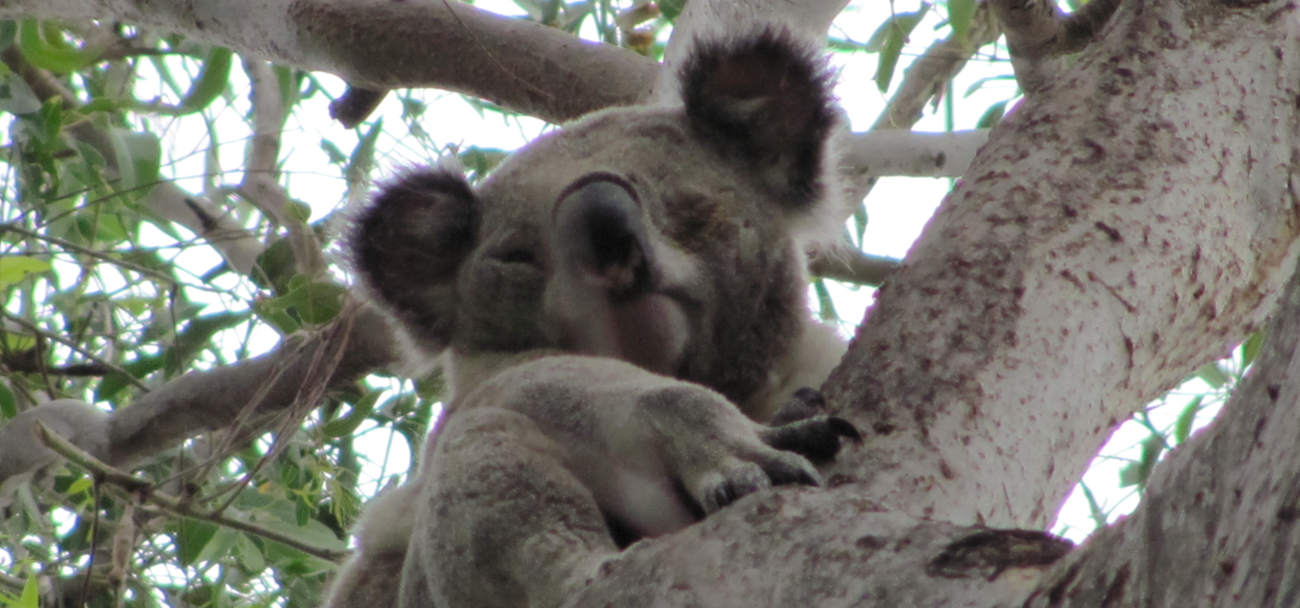What food do Koalas Eat in the Redlands?
Healthy trees look best and support greater numbers of koalas. A little time spent selecting the most appropriate species for your situation will help achieve these results.
Trees grown from seed collected from local varieties are best because they help preserve the original pattern of vegetation and do not cause detrimental changes in the offspring of bushland trees.
Heights given here are approximate and are only observed from very mature trees in a forest situation.
Trees grown in full sun are often lower. Height can be reduced by choosing for the position and pruning when young.
- Eucalyptus tereticornis (Queensland blue gum) The classic gum tree with smooth bark, often in interesting patterns and colours. It prefers the deep alluvial soils found on the coast and along creeks and gullies. A koala favourite. (40 metres)
- Eucalyptus microcorys (Tallowwood) Attractive dense dark green leaves. A good shade tree but does eventually grow tall (40 metres). Highly sought after by koalas as it seems to “balance” a diet of scribbly gum. Found in most parts of the Redlands.
- Eucalyptus seeana (Narrow-leaved red gum) One of the smaller local food trees (15 metres). Takes well to pruning for a compact well-shaped attractive tree with weeping foliage. Found in most areas of the Redlands – tolerates poorly drained shallow soils.
- Eucalyptus resinifera (Red stringybark) Highly favoured by koalas and will grow on shallow, stony soils that are well drained (30 metres).
- Eucalyptus racemosa (Scribbly gum) Often used by koalas in the Redlands, especially in conjunction with the Tallowwood. (25 metres).
- Eucalyptus propinqua (Small-fruited grey gum) Has attractive orange patches of bark when first shed. Will grow on shallow, stony soils if wet enough (30 metres).
- Eucalyptus robusta (Swamp mahogany) Ideal for damp sites close to shoreline (30 metres).
- Eucalyptus nicholii (Willow peppermint) Non-local (native to the New England Tableland) but worth growing in situations suitable for a small tree (7 metres). Koalas enjoy the fragrant leaf but the tree can be short lived.
The koala is a mainly nocturnal, arboreal marsupial which lives almost entirely on eucalypt leaves, one of its favourite being the Queensland Blue Gum (Eucalyptus tereticornis). An adult koala may eat up to a kilogram of leaves per day. Sufficient moisture is usually obtained from the leaves but koalas will drink from streams or water containers if thirsty due to drought conditions or illness.
The koala is specially adapted to climbing trees having a powerful grip, sharp claws on its three fingers and two opposable thumbs and a granular palm on each hand. Its feet consist of a clawless thumb like digit and four other clawed digits, the first and second of which are partly fused together to form a comb for grooming.


